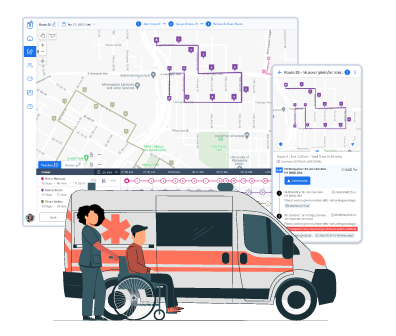
Hazards Of Working With Heavy Equipment
The construction industry is one of the ever-growing and the major contributor to the state’s GDP. However, it still holds the tag of being the most dangerous and risk-bearing sector for workers. The reports every year show the largest number of fatalities among construction workers and equipment operators. Which is alarming and worrisome for everyone linked with this industry. In order to stay safe from the risks, one must know about them and how to overcome such risks.
Using Equipment Without the Proper Safeguards
Heavy machinery should have machine guards placed in order to protect operators and other employees from potential risks. These guards act as a vital barrier, keeping people away from rotating machinery such as used backhoes and other moving elements like gears and belts. The danger of workplace accidents can be considerably higher if these precautions are overlooked and issues are not fixed on time.
How to Prevent
- Before each operation, operators should be skilled at performing routine inspections of machine guards. Missing or broken guards need to be replaced right away.
- Employers should enforce a rigorous policy against removing machine guards for any reason. There must be a zero-tolerance policy for shortcuts and negligence.
- Operator training programs must place a strong emphasis on the vital function of machine guards in accident prevention. Operators need to understand the importance of these safety elements anyhow.
- For quick resolution, workers should bring up any problems or worries about machine guards with their managers or safety authorities.
Run-Over and Crushing Accident
It is understood that the heavy construction machinery is large, heavy, and powerful. When machinery breaks down or is used inappropriately, accidents become serious problems. They may get caught by run-over and crushing accidents when struck by the moving machines. This may lead to severe injury to the immediate fatality based on the severity of the accident.
How to Prevent
- Operator competency should be a top priority for employers when choosing and training heavy equipment operators. Training should address equipment operation, maintenance, and obedience to safety procedures.
- To spot any problems that could cause accidents, regular maintenance of equipment and inspections are a must. Mistakes or flaws must be fixed right away.
- Wearing high-visibility clothes, helmets, and safety shoes while on the job site improves visibility and protection.
- To coordinate movements and prevent potential collisions between personnel and equipment, clear communication procedures using radios or hand signals can help.
- Whenever possible, use physical barriers to keep workers away from moving machinery, such as guardrails and barriers.
Equipment Transportation Risks
Although it is a standard process, moving large pieces of construction equipment between sites comes with some integral risks. Unsecured equipment, careless driving, and bad weather can all contribute to accidents that happen while travelling. This may damage the equipment and the driver or in the worst case, the people moving on roads as well.
How to Prevent
- Make sure that heavy equipment is properly tied to the trailer bed using chains, straps, or specialized tie-downs. Check the equipment’s balance as well to ensure that it won’t move during transportation.
- Arrange transportation routes in advance, and consider variables like weather, traffic, and potential dangers. Avoid travelling along roads with confined roads, sharp turns, low bridges, and other potentially dangerous barriers.
- Give particular instructions to the drivers and make sure they have the necessary licenses and certifications on how to handle big loads and negotiate difficult terrain.
- Keep a constant eye on the weather and delay travel when extreme weather, including heavy rain or snow, could endanger safety.
- Vehicle inspections are necessary to make sure that equipment trailers and transport vehicles are in good functioning order. Lighting, tires, and brakes that are not working properly might cause accidents.
Ignorance of the Dangers
There are inherent risks for construction workers while using heavy machinery. However, a lot of contractors fail to set up thorough risk assessments and prevention procedures. The workers are exposed to mishaps and injuries as a result of this neglect. It is important to inform heavy equipment operators of the risks posed by their equipment in order to reduce these risks. Or else, hire professional operators who know about these risks in advance.
How to Prevent
- Carefully evaluate each construction project’s risk, identifying potential risks and putting mitigation plans in place. Review these assessments frequently and update them as necessary.
- Offer thorough safety training courses that address the unique dangers posed by heavy machinery. These courses should cover hazard identification, equipment maintenance, and operation.
- Assign seasoned managers or mentors to train less-experienced personnel, particularly those who are just learning how to operate heavy equipment. Their direction makes sure that safety procedures are followed.
- Promote a culture of safety within the company where employees put safety before productivity. Recognize any unsafe actions right away and deal with them.
- Establish an effective method for reporting safety concerns or other issues. You should encourage employees to report instances without worrying about counter-actions so that possible risks can be found and preventive measures can be put in place.
Lack of Training
Operating heavy machines without having proper training is the major cause of accidents on the site. Inexperienced operators put themselves and their coworkers in danger in addition to running the risk of damaging the equipment. It is so important to follow the training regulations and give heavy equipment operators priority to complete instruction in order to ensure workplace safety.
How to Prevent
- Become familiar with the training specifications unique to your state or area. Before operating any machinery, make sure all heavy equipment operators comply with these regulations.
- Enroll in authorized formal training courses offered by respected organizations that cover maintenance, equipment operation, and emergency and safety practices.
- Under the guidance of seasoned operators, combine formal education with on-the-job experience. An operator’s abilities and confidence will get better by practical experience.
- Acquire the essential permits and credentials to operate particular classes of heavy machinery. It should be a must for both operators and employers to follow the law.
- Encourage continuing education and training among operators to keep well-informed of the most recent technological and safety breakthroughs in the field.
Takeaway
The construction industry carries some potential risks of accidents, especially when using heavy machinery. To minimize these dangers and ensure employee safety, employers and operators must place a high focus on training, knowledge, and adherence to safety rules. By identifying the primary risks associated with utilizing heavy equipment and putting in place efficient safety measures, the construction sector can continue to develop the future while guaranteeing the safety of its workers.



